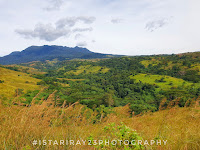Some thoughts today.
I stumbled across these pieces of information today and I wanted to share these here in my blog as a future reference for students.
TRADITIONAL MUSIC - Songs and tunes which have been performed, by custom, over a long period (usually several generations). They are most often folk songs, country dances,s or similar types of folk music but they can also be pieces from known early composers and may have been the "pop music " of their time.
Filipinos are said to be Musical Peoples and in most cases, singing is accompanied by dancing.
They used bamboo canes, palm leaves, and bark of trees to write their songs and a piece of sharp stick or iron for their pen.
Even their instruments were made of Bamboo and wood which indicated their primitiveness.
Functions of their music:
-Religious-Social Life
Characteristics of their Music
-Recitative-Mostly simple two-note music
Examples:
Dal-lot a song sung by farmers during the wedding, baptismal, and to other parties accompanied by Kutibeng(guitar)
Pamulinawen is a love song
Dung-aw is a song requesting a dead person to be good in his next life
Early Filipino music was influenced by trade relations with other race as follows;
MalaysIndonesianArabsChineseIndo-ChineseJapaneseHindus
Chinese, Japanese, and Hindus introduced their five-tone scale called pentatonic
The rhythmic effects through the use of gongs, drums, and cymbals were brought by Hindus and Mohammedans.
Reed type of wind instruments was brought by Japanese and Chinese
Music According to their category;
ordinary songs (diyuna, talindaw)street songs (indulamin, suliranin)sorrow (dalit, umbay)wedding (ihiman)rowing (tigpasin, kalusan)lullaby (hele-hele, hili, oyayi, iyaya)success (baling-kungkong, dapayanin, hiliran, sambotani, tagumpay)house (tingad)general merry making (kalipay)counting (urukay)
Musical Airs from different regions and Filipino music have grown from the simple two-note melody to the music that has become today.
Their songs were more recitative but the melody exudes customs, traditions, and aspirations.
Most of the songs were adapted to other countries that traded with them.
See other links;
BALITAW - a Visayan war song.
GABBANG - a bamboo leg xylophone.
BALITAW - a Visayan debate song.
BANDURRIA - a Rondalla instrument
AGONG - a wide-rimmed pail-shaped metal with a circle in the middle
KULIAT - a chanted vocal music about epic heroes of Palawan.
BUNGKAKA - a bamboo buzzer of Kalinga.
AMBAHAN - a traditional form of poetry by the Hanunuo Mangyan people.
GITGIT - a three-string indigenous violin with human hair for strings.
MARAYAW - a song used to communicate with spirits in rituals in Mindoro.
SALIDUMAY - Cordillera song that expresses thanksgiving, worship, and courtship among other positive themes.
Other Sources;
#NativeMusic, #FilipinoMusic, #PilipinoMusic, #FilipinoNativeMusic, #PilipinoNativeMusic, #CordilleraNativeMusic, #CordilleraMusic, #MindoroNativeMusic, #MindoroMusic, #PalawanNativeMusic, #PalawanMusic, #VisayanNativeMusic, #VisayanMusic, #FilipinoNativeMusicalInstuments, #FilipinoMusicalInstruments, #Grade7, #MAPEH,
#GRADE7MAPEH,#istariray23learnings,
Pilipino Music, Cordillera Music, Mindoro Music, Palawan Music, Visayan Music, Filipino Musical Instruments, Filipino Music, Grade 7 MAPEH, MPEH,
































